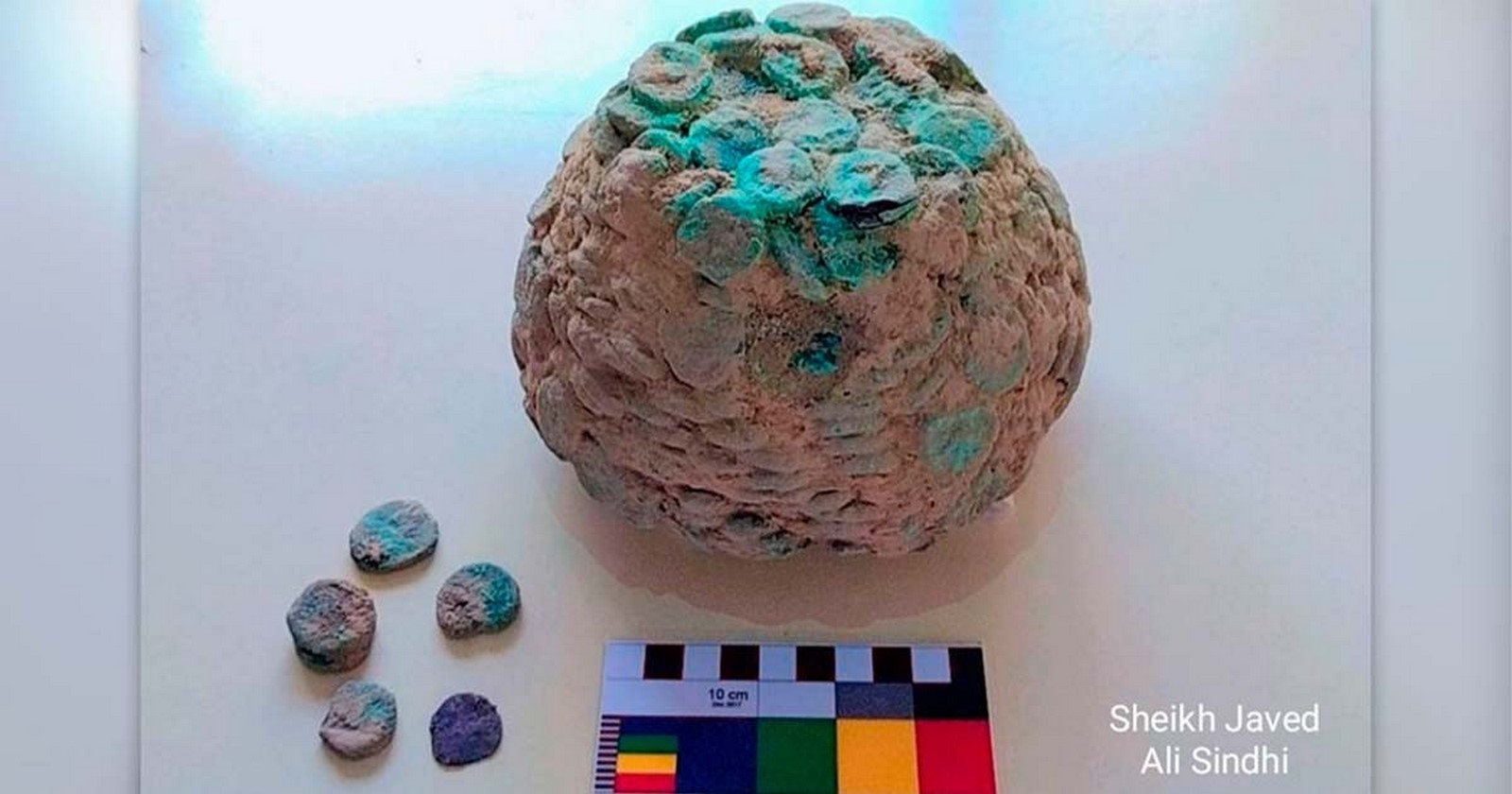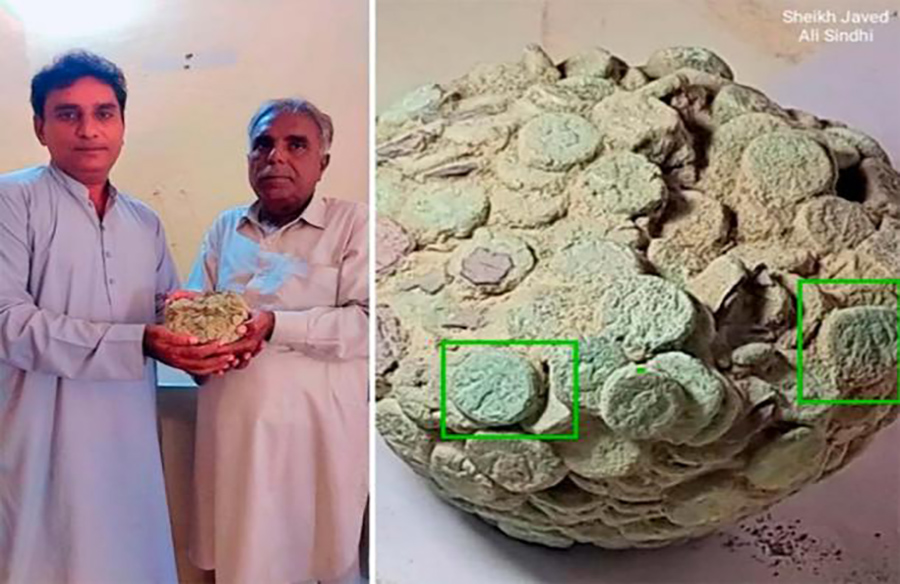A Glimpse into Ancient Civilization
Pakistan’s archaeological landscape has been enriched by a recent discovery at the ancient site of Mohenjo-Daro: an extraordinary hoard of copper coins, estimated to be over 2,000 years old, nestled within the ruins of a Buddhist stupa. Mohenjo-Daro, dating back to approximately 2600 BC, stands as a testament to the ancient Indus Valley/Harappan civilization, one of the world’s oldest civilizations.

Tracing the Legacy of the Kushan Empire
The coins unearthed at Mohenjo-Daro are attributed to the Kushan Empire, a Buddhist-dominated realm that flourished from the 2nd century BC to the 3rd century AD, following the conquests of the Greco-Bactrian Kingdom established by Alexander the Great. According to archaeologist Sheikh Javed Ali Sindhi, the stupa was erected atop the ruins of Mohenjo-Daro around 1,600 years after its decline, offering a glimpse into the enduring legacy of ancient civilizations.
The Rediscovery of Lost Relics
Discovered during a salvage excavation prompted by a wall collapse, the hoard of coins, bearing a greenish hue due to copper corrosion, weighs approximately 12 pounds and likely comprises between 1,000 and 1,500 individual coins. Notably, these coins mark the first artifacts unearthed at the stupa’s ruins since 1931, echoing earlier discoveries from the 1920s and 1930s, which depicted standing figures and Hindu deities, reflecting the syncretism of Buddhist and Hindu beliefs.

Mohenjo-Daro: A Hub of Cultural Syncretism
Once a bustling metropolis of the Harappan civilization, Mohenjo-Daro’s fortunes waned around 1800 BC, possibly due to environmental factors. The construction of the Buddhist stupa during the Kushan Empire’s reign around 150 AD signaled a resurgence of religious and cultural activities, only to be abandoned by 500 AD, amidst seismic shifts and declining Buddhist influence.
Buddhism’s Flourishing Legacy
Buddhism, originating in ancient India in the 6th century BC, found fertile ground for expansion in present-day Pakistan. Emperor Ashoka’s patronage in the 3rd century BC played a pivotal role in propagating Buddhism, evidenced by the recent discovery of a Buddha pendant in Mohenjo-Daro. The Gandhara region, under Kushan rule, emerged as a center of Buddhist art and learning, fostering cultural exchange along the Silk Road.
Decline and Legacy
Despite its flourishing under the Kushan Empire, Buddhism gradually waned with the rise of Islam in the 7th century. Many Buddhist sites, including those in Taxila, witnessed a decline in influence, yet they endure as testament to Pakistan’s rich Buddhist heritage. As relics such as the coin hoard at Mohenjo-Daro continue to resurface, they offer glimpses into a bygone era, underscoring the enduring legacy of ancient civilizations in shaping the cultural tapestry of modern-day Pakistan.





















